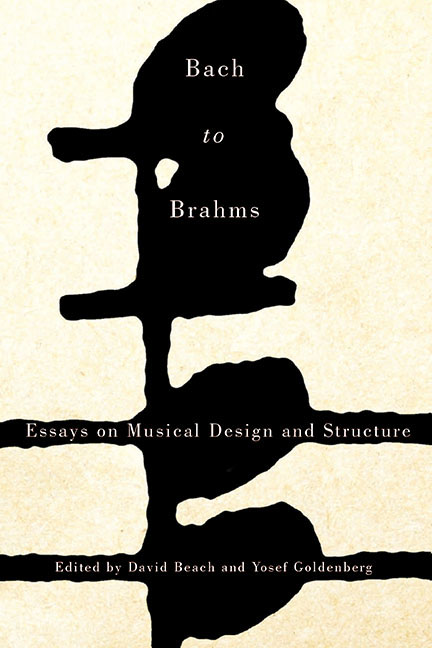Book contents
- Frontmatter
- Dedication
- Contents
- Introduction
- Part One Structure and Design
- Part Two Focus on Motive
- Part Three Structure and Design II
- 11 The “Pseudo-Einsatz” in Two Handel Fugues: Heinrich Schenker's Analytical Work with Reinhard Oppel
- 12 Formal Fusion and Its Effect on Voice-Leading Structure: The First Movement of Beethoven's Opus 132 Revisited
- 13 Indistinct Formal Functions and Conflicting Temporal Processes in the Second Movement of Brahms's Third Symphony
- 14 The Interaction of Structure and Design in the Opening Movements of Schubert's Piano Trios in B-flat Major (D. 898) and E-flat Major (D. 929)
- 15 The Suspenseful Structure of Brahms's C-Major Capriccio, Op. 76, No. 8: A Schenkerian Hearing
- List of Contributors
- Index
15 - The Suspenseful Structure of Brahms's C-Major Capriccio, Op. 76, No. 8: A Schenkerian Hearing
from Part Three - Structure and Design II
Published online by Cambridge University Press: 14 March 2018
- Frontmatter
- Dedication
- Contents
- Introduction
- Part One Structure and Design
- Part Two Focus on Motive
- Part Three Structure and Design II
- 11 The “Pseudo-Einsatz” in Two Handel Fugues: Heinrich Schenker's Analytical Work with Reinhard Oppel
- 12 Formal Fusion and Its Effect on Voice-Leading Structure: The First Movement of Beethoven's Opus 132 Revisited
- 13 Indistinct Formal Functions and Conflicting Temporal Processes in the Second Movement of Brahms's Third Symphony
- 14 The Interaction of Structure and Design in the Opening Movements of Schubert's Piano Trios in B-flat Major (D. 898) and E-flat Major (D. 929)
- 15 The Suspenseful Structure of Brahms's C-Major Capriccio, Op. 76, No. 8: A Schenkerian Hearing
- List of Contributors
- Index
Summary
As is well known, Johannes Brahms employed in certain of his works a way of writing that contradicts a time-honored norm of tonal practice: instead of beginning these works on the customary tonic harmony, he would obscure it in some way or entirely suppress it until late in the composition, thus bypassing an attribute the well-formed musical artwork had traditionally been assumed to require. Earlier nineteenth-century composers, beginning with Beethoven, had written such pieces, but Brahms found new and ingenious ways of doing it. I believe he consciously thought about this atypical procedure and felt it offered avenues for expression that had not been fully exploited.
Brahms realized the procedure in subtle ways too numerous to categorize, but a few types stand out. Sometimes the opening would keep the listener guessing between two possible keys before settling on the main one, as in the Clarinet Quintet op. 115, or the song “Botschaft,” op. 47, no. 1. A rather frequent procedure, especially in the chamber music, involves beginning on a harmony such as III or IV, reaching the tonic at the end of the first thematic idea, but returning to the nontonic harmony at later, formally important points, as in the finale of the second String Quintet, op. 111. Another strategy is featured in the finale of the Piano Trio op. 8, in which the sense of the key—B minor—is conveyed by the chord B-D-G instead of B-D-F♯. In other cases, a work will begin on the tonic in first inversion—that is, I63, with the root position withheld until the end, a well-known example being the Intermezzo in B-flat Minor, op. 117, no 2.
The most extreme cases—and the most intriguing, at least to me—are those works in which a structural tonic harmony is entirely avoided until the end, or at least far into the composition. I am writing about one such piece, but there are numerous others, which I identify in the appendix to this chapter. As a whole, this group of compositions is quite diverse in length, genre, and mood, the largest example being the finale of the Third Symphony.
- Type
- Chapter
- Information
- Bach to BrahmsEssays on Musical Design and Structure, pp. 259 - 278Publisher: Boydell & BrewerPrint publication year: 2015

